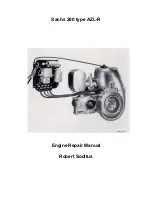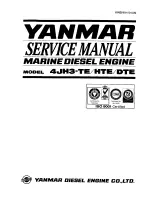
16
P1D
Cylinder
05.03
www.parker.com/euro_pneumatic
Guide for selecting suitable tubing
The selection of the correct size of tubing is often based on
experience, with no great thought to optimizing energy efficiency
and cylinder velocity. This is usually acceptable, but making a
rough calculation can result in worthwhile economic gains.
The following is the basic principle:
1. The primary line to the working valve could be over sized (this
does not cause any extra air consumption and consequently
does not create any extra costs in operation).
2. The tubes between the valve and the cylinder should,
however, be optimized according to the principle that an
insufficient bore throttles the flow and thus limits the cylinder
speed, while an oversized pipe creates a dead volume which
increases the air consumption and filling time.
The chart below is intended to help when selecting the correct
size of tube to use between the valve and the cylinder.
The following prerequisites apply:
The
cylinder load should be about 50% of the theoretical force
(= normal load). A lower load gives a higher velocity and vice
versa. The tube size is selected as a function of the
cylinder
bore, the desired cylinder velocity and the tube length between
the valve and the cylinder.
If you want to use the capacity of the valve to its maximum,
and obtain maximum speed, the tubing should be chosen so
that they at least correspond with the equivalent restriction
diameter (see description below), so that the tubing does not
restrict the total flow. This means that a short tubing must have at
least the equivalent restriction diameter. If the tubing is longer,
choose it from the table below. Straight fittings should be chosen
for highest flow rates. (Elbow and banjo fittings cause
restriction.)
1) The “equivalent throttling bore“ is a long throttle (for example a tube) or a series of throttles (for example, through a valve)
converted to a short throttle which gives a corresponding flow rate. This should not be confused with the “orifice“ which is
sometimes specified for valves. The value for the orifice does not normally take account of the fact that the valve contains a
number of throttles.
2) Qn is a measure of the valve flow capacity, with flow measured in litre per minute (l/min) at 6 bar(e) supply pressure and 1 bar
pressure drop across the valve.
Cylinder
Ø [mm]
Equivalent throttling bore
1)
Tube
ØOut./ØInt.
[mm]
Length of tubing [m]
Cylinder speed [m/s]
0,2
0,5
0,8
1,1
1,4
0
1
2
3
4
5
6
7
8
9
10
1
2
3
4
5
6
7
8
9
10
11
Ø10
Ø16
Ø20
Ø25
Ø32
Ø40
Ø50
Ø63
Ø80
Ø100
Ø125
Ø160
Ø200
14/11
–/12
–/13
–/14
–/15
–/16
12/10
10/8
8/6
6/4
5/3
4/2,7
200
400
800
1000
1200
1400
1600
1800
2000
2200
2400
3000
4000
2800
3200
3400
3600
3800
2600
4
3
2
1
Air flow
Qn
[Nl/min]





































